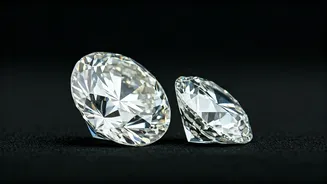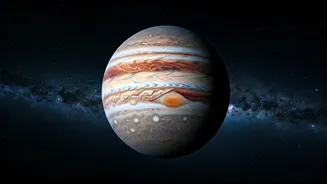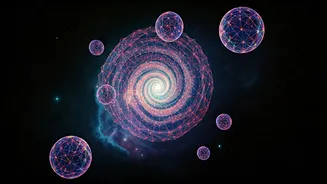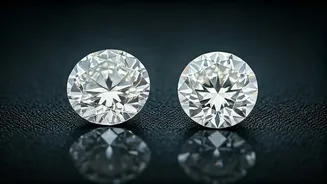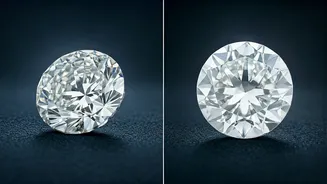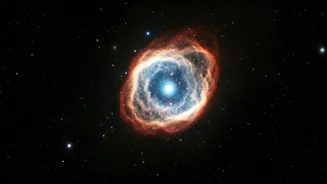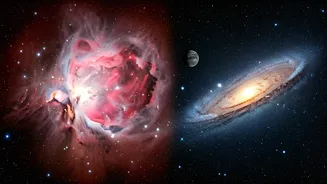The Sparkle's Source
The origin of a diamond impacts its value and nature. Natural diamonds are formed deep within the Earth's mantle over billions of years under immense pressure
and heat. These diamonds are brought to the surface through volcanic eruptions. On the other hand, lab-grown diamonds are created in controlled environments using advanced technological processes that mimic the natural diamond creation. These processes include High Pressure High Temperature (HPHT) and Chemical Vapor Deposition (CVD), which replicate the conditions necessary for diamond crystallization. Both types of diamonds share the same chemical composition and physical properties, which is why differentiating them requires careful analysis.
Looking at Clarity
Clarity is a crucial factor in evaluating diamonds, regardless of origin. Natural diamonds often have inclusions, which are small imperfections like tiny crystals or other minerals trapped within the stone. These inclusions are like fingerprints, unique to each diamond. In contrast, lab-grown diamonds usually have fewer inclusions because they're made in a controlled setting. However, not all lab-grown diamonds are flawless, and some may also have inclusions, but the type and nature of these inclusions can vary from natural diamonds. Therefore, the examination of clarity under magnification, using a jeweler's loupe or a microscope, can provide valuable clues about a diamond's origin. Inclusions can often suggest a natural origin, while the absence of them doesn't necessarily mean it is lab-created.
Examining Diamond Color
Color, or the lack thereof, also plays a key role in distinguishing between diamond types. The Gemological Institute of America (GIA) uses a scale from D (colorless) to Z (light yellow or brown) to grade diamond color. Natural diamonds can display a range of colors due to trace elements present during their formation, such as nitrogen. Lab-grown diamonds, similarly, can exhibit color variations. However, the color distribution and the presence of specific hues may differ. For example, some lab-grown diamonds might have a distinct color zoning or a subtle hue that helps experts determine their origins. Moreover, the color of a diamond is impacted by the manufacturing process. Examining a diamond's color under controlled lighting conditions and using specialized equipment can provide helpful insights.
Checking Diamond Fluorescence
Fluorescence is the visible light emission when a diamond is exposed to ultraviolet (UV) light. It is a natural phenomenon exhibited by some diamonds. When exposed to UV rays, some diamonds fluoresce, often appearing blue. The intensity of fluorescence varies, and it is graded as None, Faint, Medium, Strong, or Very Strong. Natural diamonds can show a range of fluorescence intensities and colors. Lab-grown diamonds, too, can exhibit fluorescence, but the patterns and colors might be different. Examining the fluorescence of a diamond using a UV lamp helps professionals assess its properties. This information, combined with other tests, aids in identifying the origin of the diamond. It's important to remember that the presence or absence of fluorescence does not automatically determine if a diamond is natural or lab-grown.
Modern Testing Methods
Advancements in technology have led to specialized equipment for diamond identification. These tools are often used by gemologists and jewelers. Spectroscopic analysis examines how a diamond interacts with light to identify its characteristics. For example, these instruments can detect the presence of trace elements, which are very helpful in figuring out if it is a natural or lab-grown diamond. Another technique, called the DiamondView, uses high-intensity UV light to reveal growth patterns and other internal characteristics. These tools often help experts verify the authenticity of a diamond. These tests provide insights into a diamond's creation history. This information is a major component in the identification of natural versus lab-grown diamonds.
Diamond Certification Matters
When purchasing a diamond, obtaining a reputable gemological certificate is essential. The certificate will verify a diamond's characteristics, including its cut, clarity, color, and carat weight. Certificates from well-known laboratories like GIA, the American Gem Society (AGS), or the International Gemological Institute (IGI) usually provide reliable information. The certificates include an assessment of a diamond's origin, which means that the tests will show whether the diamond is natural or lab-grown. These certificates offer assurance and can protect buyers from misrepresentation. Before making a purchase, it's wise to review the certificate to confirm the diamond's details and origin. This offers an extra layer of protection when making a significant investment.
The Value Distinction
The value of natural and lab-grown diamonds is determined by various factors. Natural diamonds generally have higher prices due to their rarity and the significant investment required for their mining and extraction. The prices for lab-grown diamonds are often lower because of the manufacturing process and supply chain. However, it's important to know that the value of a diamond also relies on its quality: cut, clarity, color, and carat weight. For both natural and lab-grown diamonds, the price is not dependent on their origin. The diamond market continues to evolve, with lab-grown diamonds gaining popularity. Consumers now have many options to select a diamond. Understanding the differences between natural and lab-grown diamonds empowers consumers to make informed choices based on their needs, preferences, and budgets.
